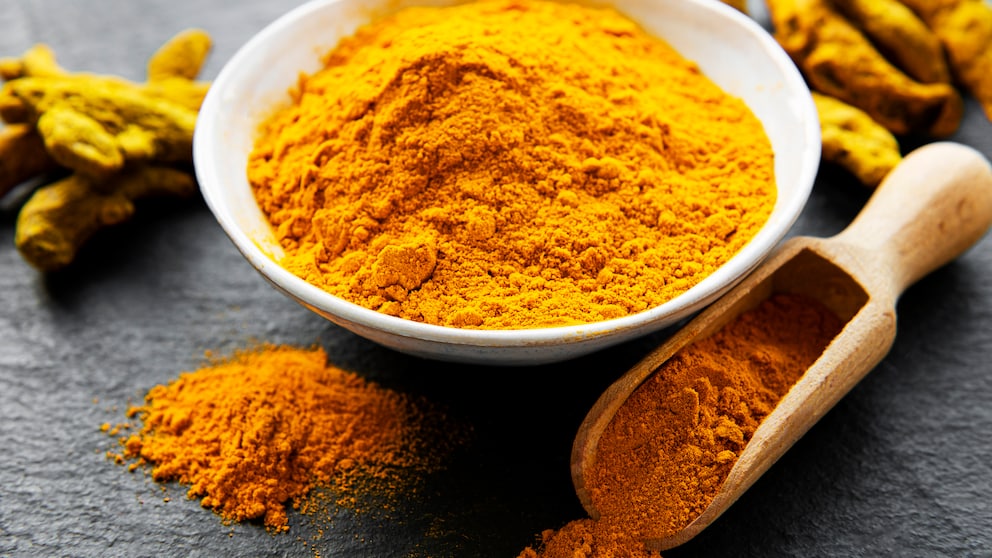October 11, 2024, 2:41 pm | Read time: 3 minutes
It is said to help with digestive problems and make you beautiful – we are talking about turmeric. However, the golden spice is not only popular in food supplements or curries but is also increasingly being used in skin care. Carmen Dörfler asked the experts what you should look out for and for whom turmeric care is suitable.
Turmeric, also known as “the gold of India,” has long since made the leap from the kitchen to cosmetics. Whether in smoothies, curry dishes, or as a radiant yellow face mask – the super spice is everywhere. Even in skincare! But what can turmeric really do for your skin? We took a closer look at the golden root.
Overview
What is turmeric actually?
Turmeric, also known as the golden spice, is a plant from the ginger family. The vibrant yellow powder is derived from the plant’s rhizome and has been a staple in Indian cuisine and Ayurvedic medicine for millennia. The main active compound, curcumin, not only imparts an intense color but is also renowned for its potent anti-inflammatory and antioxidant properties.
How turmeric is used in skin care
Turmeric can be used in various forms in skin care. Whether as a face mask, scrub, or in creams – the spice has a wide range of applications.
One of the easiest methods is the DIY face mask. Simply mix a teaspoon of turmeric with a dollop of honey and yogurt, apply the blend to your cleansed skin, and let it sit for 10 to 15 minutes. Voilà – a little spa moment at home that supermodel Iman has been relying on for decades.
What turmeric is supposed to do for your skin
Turmeric is reputed to offer a multitude of positive effects. Turmeric is said to soothe the skin, reduce redness, and even help with acne. Thanks to its antioxidant properties, it also acts as a natural anti-aging booster that scavenges free radicals and makes the skin glow. However, before you turn to this yellow marvel, remember that patience is key. The effects usually only become apparent after regular use.
Are there any risks when using it?
Despite the excitement, it’s important to be aware of the potential risks. Turmeric can irritate sensitive skin and trigger allergic reactions. It can also leave yellow stains on skin and clothing quickly, so caution is advised during application! A patch test before the first application is therefore advisable.

The Best Pistachio Perfumes for Every Budget

Lola Weippert: “I Am Afraid When I Leave My house”

Hyaluronic Acid Against Wrinkles? Application, Effect, Risks
What the expert says
Dermatologist Dr. Timm Golüke also advises a patch test before the first application. “As always with turmeric, people with sensitive skin or allergies should do a patch test first. This involves applying the product to a small area for two days, and if well-tolerated, you may proceed to use it on your face or as a body cream.”
Dr. Golüke also highlights the benefits of turmeric: “The spice from Ayurvedic medicine has an anti-inflammatory effect, can have an antibacterial and circulation-promoting effect as well as reducing swelling. Most importantly, it is an antioxidant that combats free radicals, which can contribute to collagen degradation over time.” This makes it a natural fountain of youth.
Thus, turmeric can genuinely bestow a radiant glow on your skin and slow down the aging process as long as it agrees with you. If not, it is better to use conventional skin care products such as vitamin C or rose water, which will also make your skin glow.

